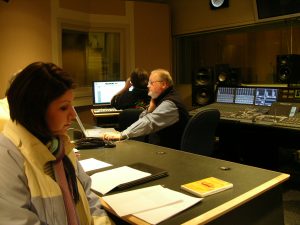 Creative Commons Image Obtained Through Flickr
Creative Commons Image Obtained Through Flickr
What do the GreenJackets, the RiverDogs, the Grasshoppers, the Catfish, the SandGnats, the BlueClaws, and the Crawdads have in common? They do not refer to square dance teams or high school debate clubs. Rather these intimidating monikers belong to professional, minor-league baseball teams. All currently play in the Class A South Atlantic League (SAL). Affectionately called the “Sally League,” it has been thrilling fans since its birth in 1904. Located in the heart of the mountains is one of the Sally’s oldest and most popular teams, the Asheville Tourists.
Multimedia:
Below is the Digital Heritage Moment as broadcast on the radio:
[audio:http://dh.wcu.edu/wp-content/uploads/2010/08/Tourists60Mx.mp3|titles=Tourists60Mx]
Asheville Tourists Essay
Essay by Timothy N. Osment, History M.A., WCU 2008
The Tourist
One memorable visit occurred in 1926 when Babe Ruth visited McCormick Field. It is reported that he “stood in the outfield, smelled the honeysuckle and said, ‘My, my, what a beautiful place to play. Delightful. Damned delightful place!’” Another interesting saga in the history of the Asheville Tourists came several years later. The Yankees, including Ruth and Lou Gehrig, were in town for another exhibition tour. Ruth came down with a stomach ailment that confined him to his hotel room. The team eventually placed him on a train bound for New York. His absence and subsequent disappearance stirred the
McCormick Field has also hosted baseball legend Jackie Robinson and his Brooklyn Dodgers, accommodated stock car racing in the 1950s, and, in 1988, was transformed into a cinematic backdrop for
Reportedly, baseball arrived in Asheville around 1866 with soldiers returning from the Civil War. As a result, the region’s baseball heritage is as long as it is rich. Accordingly, whether you live five, fifty, or five hundred miles away, make it a point to visit Asheville during the summer baseball season. Upon arrival follow the signs or ask any local citizen directions to the ballpark. Purchase your tickets, stop at the concessions for a drink & a
For more information
- The Old Ball Yard and McCormick Field: Home of Memories
, Bob Terrell, 1997. - Baseball in Asheville
, Bill Ballew, 2004. - Continuity & Change within the Asheville Tourists Baseball Organization, Preston Roberts, Brevard College, 2005.

